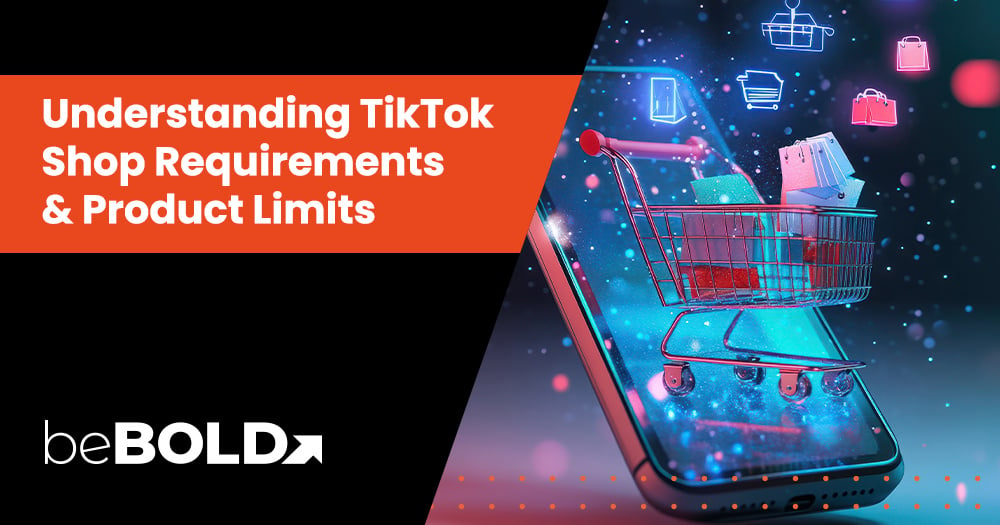Amazon has revolutionized the way a number of people shop, and sellers who understand the platform's intricacies often outperform their rivals. There are several sellers who have already switched to Amazon, making it a lucrative yet intensely competitive playground.
In this landscape, the key to thriving is not only aggressive marketing or exceptional products but also understanding and mastering Amazon Seller Metrics. These metrics offer granular insights into your performance and assist in making astute business decisions. Consequently, they impact every facet of your selling journey, from product visibility to customer trust.
This blog is a comprehensive guide to demystifying these significant metrics and employing them as powerful levers to steer your business toward growth and profitability.
Why Are Amazon Seller Metrics So Important?
Amazon performance metrics provide a reality check on your performance as an Amazon seller. They feed into Amazon's algorithms that decide your product ranking, Buy Box eligibility, and access to special selling programs. There are many more reasons why seller metrics are essential, which we shall learn in the following sections.
1. Boost Sales Performance
Amazon metrics like Conversion Rate and Best Sellers' Rank offer insights into how well your products perform compared to competitors, including knowing your Amazon conversion rate. These metrics help identify your most profitable products and increase your chances of winning the Buy Box, ultimately boosting revenue and enhancing the effectiveness of your marketing campaigns.
2. Optimize Advertising Efforts
Metrics such as ACoS, TACoS, and ROAS help you measure the effectiveness of your advertising campaigns. Understanding these metrics allows you to optimize your keyword strategy, adjust bids, and turn your ads into profitable revenue-generating tools.
3. Improve Customer Satisfaction
Metrics like Return Rate, Negative Return Feedback Rate, and Buyer-Seller Contact Response Time give valuable insights into your customer service quality. Addressing issues highlighted by these metrics can improve customer experience, increase positive reviews, and build trust in your brand.
4. Maintain Account Health
Key metrics like Order Defect Rate, Pre-Fulfillment Cancellation Rate, and Late Shipment Rate are essential for maintaining a positive account health score. A healthy account not only prevents potential account suspension but also opens up opportunities like selling in gated categories and winning the Buy Box.
What Are Some Essential Metrics to Master?
Now that we understand the importance of Amazon Seller Metrics, it's time to dive deep into each one of them to master them.
1. Buy Box Percentage (BBP)
Metric Overview: Measures how often your product appears as the default buying option in the Buy Box. A high BBP is critical, as around 82% of Amazon sales come from it.
Strategies for Improvement:
- Maintain Competitive Pricing: Use Amazon repricing tools to keep your prices competitive.
- Improve Seller Performance Metrics: Focus on improving key metrics like ODR, Cancellation Rate, and Late Shipment Rate.
- Fast and Reliable Delivery: Utilize FBA for quicker and reliable shipping to increase Buy Box chances.
2. Unit Session Percentage (USP)
Metric Overview: Indicates how many customer sessions result in a sale, reflecting product desirability and contributing to a positive customer experience.
Strategies for Improvement:
- Create Captivating Listings: Use accurate descriptions, crisp images, and relevant keywords.
- Boost Positive Reviews: Gather positive reviews and offer competitive pricing and fast shipping options.
- Address Red Flags: Investigate poor USP by reviewing product images, titles, and negative reviews.
3. Order Defect Rate (ODR)

Metric Overview: Measures negative customer feedback, A-to-Z claims, and chargebacks. Aim for a low ODR under 1%.
Strategies for Improvement:
- Provide Quality Products: Ensure accurate listings and high-quality products.
- Prompt Customer Service: Address customer queries and complaints quickly and professionally.
- Efficient Delivery: Ensure timely product delivery to avoid complaints related to late shipments.
4. Late Shipment Rate (LSR)
Metric Overview: Tracks orders shipped later than the expected ship date. Must remain under 4% to avoid penalties.
Strategies for Improvement:
- Efficient Inventory Control: Keep accurate inventory records to avoid delays due to stockouts.
- Reliable Carriers: Partner with dependable shipping carriers to guarantee timely deliveries.
- Anticipate High Demand: Plan peak times (like holidays) to meet increased order volumes.
5. Inventory Performance Index (IPI)

Metric Overview: An IPI score from 0 to 1000 reflects how well you manage FBA inventory. Higher scores improve storage limits and reduce fees.
Strategies for Improvement:
- Minimize Excess Inventory: Avoid holding excess stock to reduce storage costs.
- Balance Sell-Through Rate: Ensure stock turnover is aligned with sales speed.
- Maintain In-Stock Rate: Keep popular products consistently available.
- Avoid Stranded Inventory: Prevent unsellable inventory from occupying storage space.
6. Advertising Cost of Sales (ACoS)
Metric Overview: Measures ad spend efficiency by calculating the percentage of sales spent on ads.
Strategies for Improvement:
- Improve Keyword Targeting: Regularly optimize and review campaign keywords based on performance.
- Set Competitive Bidding: Adjust keyword bidding to maximize ROI.
- Enhance Product Listings: Optimize listings to improve ad conversion rates and ad campaign efficiency.
The formula for ACoS, or Advertising Cost of Sales, is:
ACoS = (Total Ad Spend / Sales Generated from Advertising) × 100
For instance, if you spend $100 on Amazon advertising and generate $500 in sales from those ads, your ACoS would be 20%. This indicates that 20% of your revenue from advertising goes toward covering ad costs, meaning you earn $5 in sales for every $1 spent.
7. Conversion Rate
Metric Overview: Measures the percentage of visitors who purchase a product after viewing its listing. A higher conversion rate indicates an effective product page.
Strategies for Improvement:
- Enhanced Content: Use engaging descriptions and A+ content to captivate buyers.
- High-Quality Images: Include clear and appealing photos that highlight product features.
- Social Proof: Encourage positive reviews to build customer trust.
The formula for CVR, or Conversion Rate, is:
CVR = (Number of Orders / Number of Clicks) × 100
For example, if your ad receives 10,000 clicks and results in 100 purchases, the CVR would be 1%. This means that 1% of the individuals who clicked on your ad completed a purchase.
8. Keyword Ranking
Metric Overview: Tracks where your product appears in search results for specific terms, directly affecting visibility and sales.
Strategies for Improvement:
- Keyword Optimization: Integrate relevant keywords in titles and backend fields.
- Sales Boosts: Promote initial sales with ads or deals to improve ranking.
- Regular Monitoring: Use tools like Jungle Scout to track and adapt to changes.
9. TACoS (Total Advertising Cost of Sales)
Metric Overview: The percentage of ad spend in relation to total sales, showing the balance between paid and organic revenue.
Strategies for Improvement:
- Diversified Efforts: Focus on both paid ads and organic growth strategies.
- Ad Optimization: Target high-performing keywords to maximize ad efficiency.
- Lower Costs: Use negative keywords to eliminate irrelevant clicks.
The formula for TACoS, or Total Advertising Cost of Sales, is:
TACoS = (Advertising Spend / Total Revenue) × 100
For instance, if you spend $1,000 per month on Amazon ads and generate $10,000 in total revenue from both organic and PPC sales, your TACoS would be 10%. This reflects the percentage of your total revenue invested in advertising.
10. RoAS (Return on Advertising Spend)
Metric Overview: Indicates the revenue earned per dollar spent on ads, highlighting campaign profitability.
Strategies for Improvement:
- Targeted Ads: Use precise audience targeting to improve relevance.
- Budget Allocation: Shift spending toward high-performing ads for maximum ROI.
- A/B Testing: Test different ad creatives to identify the most effective ones.
The formula for ROAS, or Return on Advertising Spend, is:
ROAS = Sales Generated from Advertising / Total Ad Spend
For example, if you invest $100 in Amazon advertising and generate $500 in sales from those ads, your ROAS would be 5. This means you earn $5 in sales for every $1 spent on advertising.
11. Amazon Fees
Metric Overview: Includes referral, fulfillment, and other fees associated with selling on the platform. Proper management of these fees ensures profitability.
Strategies for Improvement:
- Fee Analysis: Use Amazon’s fee calculator to estimate costs.
- Product Bundling: Increase average order value to offset fees.
- FBA Optimization: Analyze whether Fulfilled by Amazon or seller fulfillment is more cost-effective.
12. Account Health
Metric Overview: Tracks key performance indicators like order defect rate and policy compliance to ensure seller privileges remain intact.
Strategies for Improvement:
- Policy Adherence: Familiarize yourself with Amazon’s guidelines to avoid violations.
- Customer Service: Respond promptly to inquiries and resolve issues to minimize complaints.
- Proactive Monitoring: Regularly review metrics on your dashboard to address concerns early.
How to Monitor and Analyze Metrics?
Constant monitoring and meticuTlous analysis of your seller metrics offer invaluable insights into your business's performance dynamics. Let's explore some methods and tools to proficiently monitor and analyze your Amazon Seller Metrics.
1. Using the Amazon Seller Central dashboard

The Amazon Seller Central dashboard is an all-in-one platform that provides a bird's eye view of your entire business operations on Amazon. It offers real-time access to essential data related to sales, orders, returns, feedback, and account health, among other things. It also includes various reports that can be accessed for more detailed and specific data.
Key features of the Amazon Seller Central dashboard:
- Performance Widgets: These provide quick oversights of your sales, inventory, pricing, and order fulfillment, among other details.
- Detailed Business Reports: These provide in-depth insights into your business's various aspects, with options to filter and download data.
- Account Health Dashboard: This provides direct access to your ODR, cancellation rate, late shipment rate, and other key compliance metrics.
2. Employing third-party tools
While the Amazon Seller Central dashboard is a powerful tool, it can sometimes be limiting, especially when dealing with more complex analytics. These tools offer advanced data visualization, integration capabilities, and custom algorithms, providing deeper insights and streamlining your optimization efforts.
Benefits of using third-party tools:
- Enhanced Data Analysis: They provide more in-depth analysis, identifying patterns and trends that might not be evident from basic metrics.
- Better Keyword Insights: They help track keyword rankings, suggesting adjustments for better SEO ranking and ad performance.
- Inventory and Price Optimization: They offer features for automated inventory management and dynamic repricing, boosting efficiency and competitiveness.
3. Establishing benchmark metrics for your business
Understanding and establishing benchmark metrics specific to your business on Amazon is crucial for continuous improvement and growth. By defining key performance indicators (KPIs), including Amazon seller performance metrics like sales volume, conversion rate, return rate, or ACoS, as well as Amazon fees, you create a standard against which you can evaluate your performance. These metrics act as a yardstick, allowing you to compare your progress over time and against competitors.
Here’s what you need to do to establish benchmark metrics:
- Data-Driven Decisions: Clear insights to optimize listings, pricing, and ads.
- Performance Monitoring: Track trends and address issues before they grow.
- Competitive Edge: Identify areas for improvement and stay ahead.
- Scalable Growth: Measure growth and refine strategies for long-term success.
- Improved Efficiency: Optimize underperforming areas for better ROI.
What Are Some Tips for Improving Your Metrics?
Once you've established your benchmark metrics and started monitoring them, the next step is to boost your performance to exceed these benchmarks consistently. Let's delve into these facets individually and uncover tips to amplify your metrics and your Amazon marketplace success.
1. Product listing optimization
Optimizing your product listings on Amazon is crucial to improving your visibility, attracting customers, and, ultimately, enhancing sales and rankings.
Here are some tips for effective product listing optimizations:
- Effective Title and Description: Make sure your product title and description are clear, concise, and contain relevant keywords. This will help increase your product's visibility in Amazon's search algorithm.
- High-Quality Images: Use high-resolution images that accurately showcase your product's features. Additional images showcasing different angles or uses will significantly aid the customer in their buying decision.
- Keyword Optimization: Identify relevant high and medium-tail keywords and incorporate them naturally within your product title, description, and backend keywords.
- Competitive Pricing: Keep your pricing competitive by regularly tracking your competitors' prices and adjusting yours accordingly. However, refrain from underpricing your products as it could lead to perceived quality concerns among customers.
Pro tip: Do you wish to optimize your product listing? Partner with beBold Digital to enhance your Amazon sales! Our expertise transforms your product listings into high-performing assets, increasing visibility and relevance. From free audits of your current listings to crafting compelling, conversion-focused listings, we offer tailored solutions that deliver results. Ready to see your sales soar? Contact Us today and experience the difference!
2. Efficient inventory management
Effective inventory management is the backbone of any successful Amazon selling experience.
Here are a few tactics to help streamline your process:
- Demand Forecasting: Analyze past sales records and market trends to predict future product demand accurately. Use this data to plan production and procurement schedules.
- Safety Stock: Maintain a safety stock level to safeguard against unexpected demand hikes or supply-chain disruptions. However, excessive stocking should be avoided to reduce storage costs.
- Automation: Employ automation tools for tasks like order processing, inventory updates, and demand forecasting. This minimizes human errors and boosts efficiency.
- Regular Audits: Regularly audit your inventory to reconcile physical stock with recorded data. This can help detect errors or losses and maintain accurate inventory records.
3. Enhancing customer service
Customer service plays a pivotal role in the Amazon marketplace, affecting everything from product ranking to conversion rates.
Below are some tips to improve customer service:
- Prompt Response: Respond to customer queries promptly, ensuring their issues are addressed promptly. This increases customer trust and reduces the chances of negative reviews.
- Delivery Expectations: Ensure that shipping times are realistic and clearly communicated to the customers. Punctual delivery of products enhances the customer's experience and leads to positive feedback.
- Return Policy: Make your return policy easy and customer-friendly. Smooth return experiences lead to customer loyalty and can often convert a potentially harmful review into a positive one.
- Solicit Feedback: Proactively approach your customers, asking for their feedback or reviews. Genuine, positive reviews boost your reputation and attract more customers.
4. Testing and tweaking advertising strategies
Achieving optimal returns from your advertising spend on Amazon requires constant experimenting and learning.
Here are some strategies you can employ:
- Split Testing: Conduct A/B testing in your ads by altering single variables at a time. This can help you identify which elements work best in driving conversions.
- Optimize Keywords: Regularly review your ad campaign keywords and optimize them based on performance. Non-performing keywords should be replaced with higher-yielding ones.
- Flexible Bidding: Continuously monitor and adjust your keyword bidding strategy according to competition or sales data changes.
- Effective Copywriting: Create compelling ad copies that specifically highlight the USPs of your product. This can garner greater attention and induce more click-throughs.
Conclusion
Remember that understanding and effectively managing Amazon Seller Metrics is key to success in the competitive e-commerce landscape, where thousands of online retailers compete.
These metrics influence your product rankings and play a significant role in building a positive reputation, thereby enhancing customer satisfaction and ultimately driving more sales.
Moreover, by regularly monitoring and optimizing these key performance indicators, sellers can align with Amazon's standards and distinguish themselves in the ever-evolving marketplace, enhancing their visibility in amazon search results. .
Implementing the actionable tips in this guide would significantly aid in maintaining consistent growth and fostering long-term success for your business.
Frequently Asked Questions
How can I improve my Buy Box Percentage?
Improving your Buy Box Percentage primarily involves maintaining competitive pricing, improving your overall seller performance metrics and offering Amazon's preferred shipping options such as Prime.
What is a good ACoS for Amazon sellers?
A 'good' ACoS varies depending on your business goals, product costs, and market dynamics. However, generally, a lower ACoS, where you are spending less on ads to gain the same sales, is considered favorable.
How often should I analyze and update my metrics?
Regular monitoring and updating of your metrics are recommended to stay on top of any changes or trends that appear. Some metrics might need daily monitoring, while others, like advertising metrics, require weekly or biweekly check-ins.
How do I check my Amazon metrics?
You can monitor your Amazon metrics by logging into your Seller Central account and navigating to the Business Reports page under the Reports dropdown menu. For a complete overview of your performance, visit your Account Health page in the Performance tab.








Comments